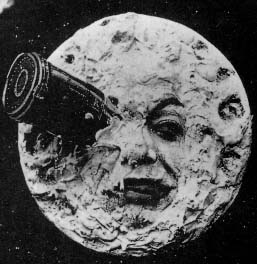|
Dream (2008 Film)
''Dream'' () is a List of South Korean films of 2008, 2008 South Korean film directed by Kim Ki-duk. It is the fifteenth feature film by the director. Plot Jin awakes from a dream where he causes a traffic accident to find that the accident actually took place. The police suspect a woman, Ran, though she denies any involvement as she was asleep the whole time. It transpires that while Jin dreams, Ran acts out those dreams in her sleep. Cast * Joe Odagiri as Jin * Lee Na-young as Ran * Park Ji-ah (actress, born 1972), Park Ji-a as Jin's former lover * Jin Tae-hyun, Kim Tae-hyun as Ran's former lover * Lee Joo-seok as traffic police officer * Han Gi-joong as violent crimes police officer * Lee Ho-yeong as crime scene police officer * Kim Min-su as crime scene police officer * Chang Mi-hee as a doctor Release ''Dream'' was released in South Korea on 9 October 2008, [...More Info...] [...Related Items...] OR: [Wikipedia] [Google] [Baidu] |
Kim Ki-duk
Kim Ki-duk ( ; 20 December 196011 December 2020) was a South Korean film director and screenwriter, noted for his Idiosyncrasy, idiosyncratic Art film, art-house cinematic works. His films have received many distinctions in the festival circuit, rendering him one of the most important contemporary Asian film directors. His major festival awards include the Golden Lion at 69th Venice International Film Festival for ''Pietà (film), Pietà'', a Silver Lion for Best Director at 61st Venice International Film Festival for ''3-Iron'', a Silver Bear for Best Director at 54th Berlin International Film Festival for ''Samaritan Girl'', and the Un Certain Regard prize at 2011 Cannes Film Festival for ''Arirang (2011 film), Arirang''. His most widely known feature is ''Spring, Summer, Fall, Winter... and Spring'' (2003), included in film critic Roger Ebert's The Great Movies, Great Movies. Two of his films served as official submissions for the Academy Award for Best International Featur ... [...More Info...] [...Related Items...] OR: [Wikipedia] [Google] [Baidu] |
Films Directed By Kim Ki-duk
A film, also known as a movie or motion picture, is a work of Visual arts, visual art that simulates experiences and otherwise communicates ideas, stories, perceptions, emotions, or atmosphere through the use of moving images that are generally, since the 1930s, Sound film, synchronized with sound and (less commonly) other sensory stimulations. Etymology and alternative terms The name "film" originally referred to the thin layer of photochemical emulsion on the celluloid strip that used to be the actual Recording medium, medium for recording and displaying motion pictures. Many other terms exist for an individual motion-picture, including "picture", "picture show", "moving picture", "photoplay", and "flick". The most common term in the United States is "movie", while in Europe, "film" is preferred. Archaic terms include "animated pictures" and "animated photography". "Flick" is, in general a slang term, first recorded in 1926. It originates in the verb flicker, owing to ... [...More Info...] [...Related Items...] OR: [Wikipedia] [Google] [Baidu] |
2008 Multilingual Films
8 (eight) is the natural number following 7 and preceding 9. Etymology English ''eight'', from Old English '', æhta'', Proto-Germanic ''*ahto'' is a direct continuation of Proto-Indo-European numerals, Proto-Indo-European '':wikt:Appendix:Proto-Indo-European/oḱtṓw, *oḱtṓ(w)-'', and as such cognate with Greek and Latin , both of which stems are reflected by the English prefix :wikt:oct-, oct(o)-, as in the ordinal adjective ''octaval'' or ''octavary'', the distributive adjective is ''octonary''. The adjective ''octuple'' (Latin ) may also be used as a noun, meaning "a set of eight items"; the diminutive ''octuplet'' is mostly used to refer to eight siblings delivered in one birth. The Semitic numerals, Semitic numeral is based on a root ''*θmn-'', whence Akkadian ''smn-'', Arabic ''ṯmn-'', Hebrew ''šmn-'' etc. The Chinese numeral, written (Standard Mandarin, Mandarin: ''bā''; Cantonese language, Cantonese: ''baat''), is from Old Chinese ''*priāt-'', ultim ... [...More Info...] [...Related Items...] OR: [Wikipedia] [Google] [Baidu] |
Films About Suicide
A film, also known as a movie or motion picture, is a work of visual art that simulates experiences and otherwise communicates ideas, stories, perceptions, emotions, or atmosphere through the use of moving images that are generally, since the 1930s, synchronized with sound and (less commonly) other sensory stimulations. Etymology and alternative terms The name "film" originally referred to the thin layer of photochemical emulsion on the celluloid strip that used to be the actual medium for recording and displaying motion pictures. Many other terms exist for an individual motion-picture, including "picture", "picture show", "moving picture", "photoplay", and "flick". The most common term in the United States is "movie", while in Europe, "film" is preferred. Archaic terms include "animated pictures" and "animated photography". "Flick" is, in general a slang term, first recorded in 1926. It originates in the verb flicker, owing to the flickering appearance of early films. ... [...More Info...] [...Related Items...] OR: [Wikipedia] [Google] [Baidu] |
Films About Dreams
A film, also known as a movie or motion picture, is a work of visual art that simulates experiences and otherwise communicates ideas, stories, perceptions, emotions, or atmosphere through the use of moving images that are generally, since the 1930s, synchronized with sound and (less commonly) other sensory stimulations. Etymology and alternative terms The name "film" originally referred to the thin layer of photochemical emulsion on the celluloid strip that used to be the actual medium for recording and displaying motion pictures. Many other terms exist for an individual motion-picture, including "picture", "picture show", "moving picture", "photoplay", and "flick". The most common term in the United States is "movie", while in Europe, "film" is preferred. Archaic terms include "animated pictures" and "animated photography". "Flick" is, in general a slang term, first recorded in 1926. It originates in the verb flicker, owing to the flickering appearance of early films ... [...More Info...] [...Related Items...] OR: [Wikipedia] [Google] [Baidu] |
Films Set In Prison
A film, also known as a movie or motion picture, is a work of visual art that simulates experiences and otherwise communicates ideas, stories, perceptions, emotions, or atmosphere through the use of moving images that are generally, since the 1930s, synchronized with sound and (less commonly) other sensory stimulations. Etymology and alternative terms The name "film" originally referred to the thin layer of photochemical emulsion on the celluloid strip that used to be the actual medium for recording and displaying motion pictures. Many other terms exist for an individual motion-picture, including "picture", "picture show", "moving picture", "photoplay", and "flick". The most common term in the United States is "movie", while in Europe, "film" is preferred. Archaic terms include "animated pictures" and "animated photography". "Flick" is, in general a slang term, first recorded in 1926. It originates in the verb flicker, owing to the flickering appearance of early films. ... [...More Info...] [...Related Items...] OR: [Wikipedia] [Google] [Baidu] |
South Korean Fantasy Films
South is one of the cardinal directions or compass points. The direction is the opposite of north and is perpendicular to both west and east. Etymology The word ''south'' comes from Old English ''sūþ'', from earlier Proto-Germanic ''*sunþaz'' ("south"), possibly related to the same Proto-Indo-European root that the word ''sun'' derived from. Some languages describe south in the same way, from the fact that it is the direction of the sun at noon (in the Northern Hemisphere), like Latin meridies 'noon, south' (from medius 'middle' + dies 'day', ), while others describe south as the right-hand side of the rising sun, like Biblical Hebrew תֵּימָן teiman 'south' from יָמִין yamin 'right', Aramaic תַּימנַא taymna from יָמִין yamin 'right' and Syriac ܬܰܝܡܢܳܐ taymna from ܝܰܡܝܺܢܳܐ yamina (hence the name of Yemen, the land to the south/right of the Levant). South is sometimes abbreviated as S. Navigation By convention, the ''bottom or down- ... [...More Info...] [...Related Items...] OR: [Wikipedia] [Google] [Baidu] |
Showbox Films
Showbox Co., Ltd. () is a South Korean film distribution and production company. It is one of the largest film distribution companies in South Korea, founded in 1999. Showbox is the film investment, production and distribution branch of Mediaplex, Inc., entertainment arm of Orion Group and Kumho Asiana Group. Its main competitors for domestic box office are CJ Entertainment, Lotte Entertainment and Next Entertainment World. Despite having very short history in the industry, they managed to have top 6 of 10 blockbusters in Korean box office history, number 1 being 2012's '' The Thieves''. History * June 1996: Establishment of Media Flex Co., Ltd. to enter the movie business. * November 1999: Establishment of Megabox to enter the movie theater business. * January 2002: Establishment of ShowBox brand and start of movie distribution investment. * December 2002: Their first film Sex Is Zero premiers and becomes the fifth most popular film of 2002; selling 4 million tickets. * ... [...More Info...] [...Related Items...] OR: [Wikipedia] [Google] [Baidu] |
South Korean Mystery Films
South is one of the cardinal directions or compass points. The direction is the opposite of north and is perpendicular to both west and east. Etymology The word ''south'' comes from Old English ''sūþ'', from earlier Proto-Germanic ''*sunþaz'' ("south"), possibly related to the same Proto-Indo-European root that the word ''sun'' derived from. Some languages describe south in the same way, from the fact that it is the direction of the sun at noon (in the Northern Hemisphere), like Latin meridies 'noon, south' (from medius 'middle' + dies 'day', ), while others describe south as the right-hand side of the rising sun, like Biblical Hebrew תֵּימָן teiman 'south' from יָמִין yamin 'right', Aramaic תַּימנַא taymna from יָמִין yamin 'right' and Syriac ܬܰܝܡܢܳܐ taymna from ܝܰܡܝܺܢܳܐ yamina (hence the name of Yemen, the land to the south/right of the Levant). South is sometimes abbreviated as S. Navigation By convention, the ''bottom or down-f ... [...More Info...] [...Related Items...] OR: [Wikipedia] [Google] [Baidu] |
2000s Korean-language Films
S, or s, is the nineteenth letter of the Latin alphabet, used in the English alphabet, the alphabets of other western European languages and other latin alphabets worldwide. Its name in English is ''ess'' (pronounced ), plural ''esses''. History Northwest Semitic šîn represented a voiceless postalveolar fricative (as in 'ip'). It originated most likely as a pictogram of a tooth () and represented the phoneme via the acrophonic principle. Ancient Greek did not have a "sh" phoneme, so the derived Greek letter Sigma () came to represent the voiceless alveolar sibilant . While the letter shape Σ continues Phoenician ''šîn'', its name ''sigma'' is taken from the letter '' Samekh'', while the shape and position of ''samekh'' but name of ''šîn'' is continued in the '' xi''. Within Greek, the name of ''sigma'' was influenced by its association with the Greek word (earlier ), "to hiss". The original name of the letter "Sigma" may have been ''san'', but due to the ... [...More Info...] [...Related Items...] OR: [Wikipedia] [Google] [Baidu] |
South Korean Independent Films
South is one of the cardinal directions or compass points. The direction is the opposite of north and is perpendicular to both west and east. Etymology The word ''south'' comes from Old English ''sūþ'', from earlier Proto-Germanic ''*sunþaz'' ("south"), possibly related to the same Proto-Indo-European root that the word ''sun'' derived from. Some languages describe south in the same way, from the fact that it is the direction of the sun at noon (in the Northern Hemisphere), like Latin meridies 'noon, south' (from medius 'middle' + dies 'day', ), while others describe south as the right-hand side of the rising sun, like Biblical Hebrew תֵּימָן teiman 'south' from יָמִין yamin 'right', Aramaic תַּימנַא taymna from יָמִין yamin 'right' and Syriac ܬܰܝܡܢܳܐ taymna from ܝܰܡܝܺܢܳܐ yamina (hence the name of Yemen, the land to the south/right of the Levant). South is sometimes abbreviated as S. Navigation By convention, the ''bottom or down- ... [...More Info...] [...Related Items...] OR: [Wikipedia] [Google] [Baidu] |



